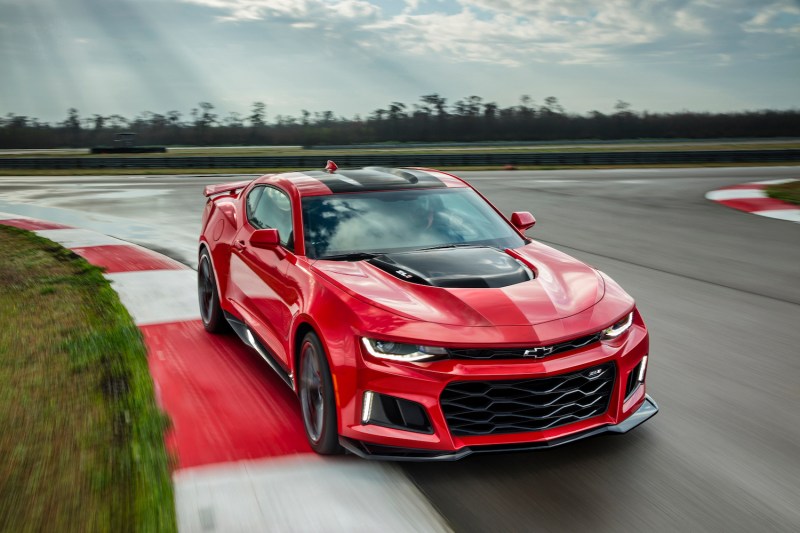Chevrolet’s new Camaro is receiving a hearty amount of praise for its Cadillac ATS-derived chassis, updated interior, and 6.2-liter V8 engine. These changes have made the muscle car a true challenger to Ford’s new Mustang.
That said, Ford’s GT350R-spec ‘stang has now surpassed the old Z/28 Camaro’s incredibly high levels of on-track performance. So how will Chevy respond? With a whole lot of force.
The U.S. automaker has taken the wraps off its 2017 Camaro ZL1, which turns up the heat on the previous generation’s 580 horsepower V8 and 556 pound-feet of torque. Chevrolet appears dead-set on owning its performance category, as it says the new ZL1 “is poised to challenge the most advanced sports coupes in the world by any measure.”
“The Camaro ZL1 is designed to excel at everything,” said Mark Reuss, executive vice president of Global Product Development. “It’s a 2+2 coupe offering incredible performance – acceleration, handling and braking – with the highest levels of technology and perfect chassis damping, making it suitable for everyday driving. It will compare well to any sports coupe, at any price and in any setting.”
More specifically, the ZL1 borrows the Corvette Z06’s 6.2-liter supercharged V8 to the tune of 640 hp and 640 lb-ft of torque. Not only is that engine all-new for the Camaro, should you decide to forgo the standard six-speed manual gearbox, Chevrolet will offer a new 10-speed automatic. The new Camaro’s lighter, stiffer platform is complemented by Magnetic Ride suspension and an electronic limited-slip differential. Also standard is a Driver Mode Selector, dual-stage exhaust, launch control, and Performance Traction Management.
Visually, the 2017 ZL1 will be distinguished by a lower grille opening for greater airflow, a new “flow-tie” open bowtie insignia, an updated hood with a carbon fiber insert and heat extractor, a larger front splitter, unique rockers, a wing-style rear spoiler, and wider front fenders. The name of the game is aerodynamics. “From every angle, the elements coalesce to give the car a purposeful, super aggressive attitude.,” said John Mack, Camaro exterior design manager.
Inside, the ZL1 comes equipped with Recaro front seats, a suede flat-bottom steering wheel and shift knob, and available Performance Data Recorder.
At 200 pounds less than its predecessor, and with 60 more horsepower and 80 more lb-ft of torque on tap, the new ZL1 has a significantly improved power-to-weight ratio. The ZL1 sports 285 front and 305 rear Goodyear Eagle F1 Supercar tires plus Brembo brakes for improved track handling.
“Driving the Camaro ZL1 is best described as ‘fast with finesse,’” said Reuss. “It is beautifully balanced, with perfect damping and isolation for optimal performance and driver confidence in virtually any situation – from the Pacific Coast Highway to Willow Springs to Pomona.”
Sounds good, but we’ll find out for sure when the 2017 Camaro ZL1 goes on sale late this year.













